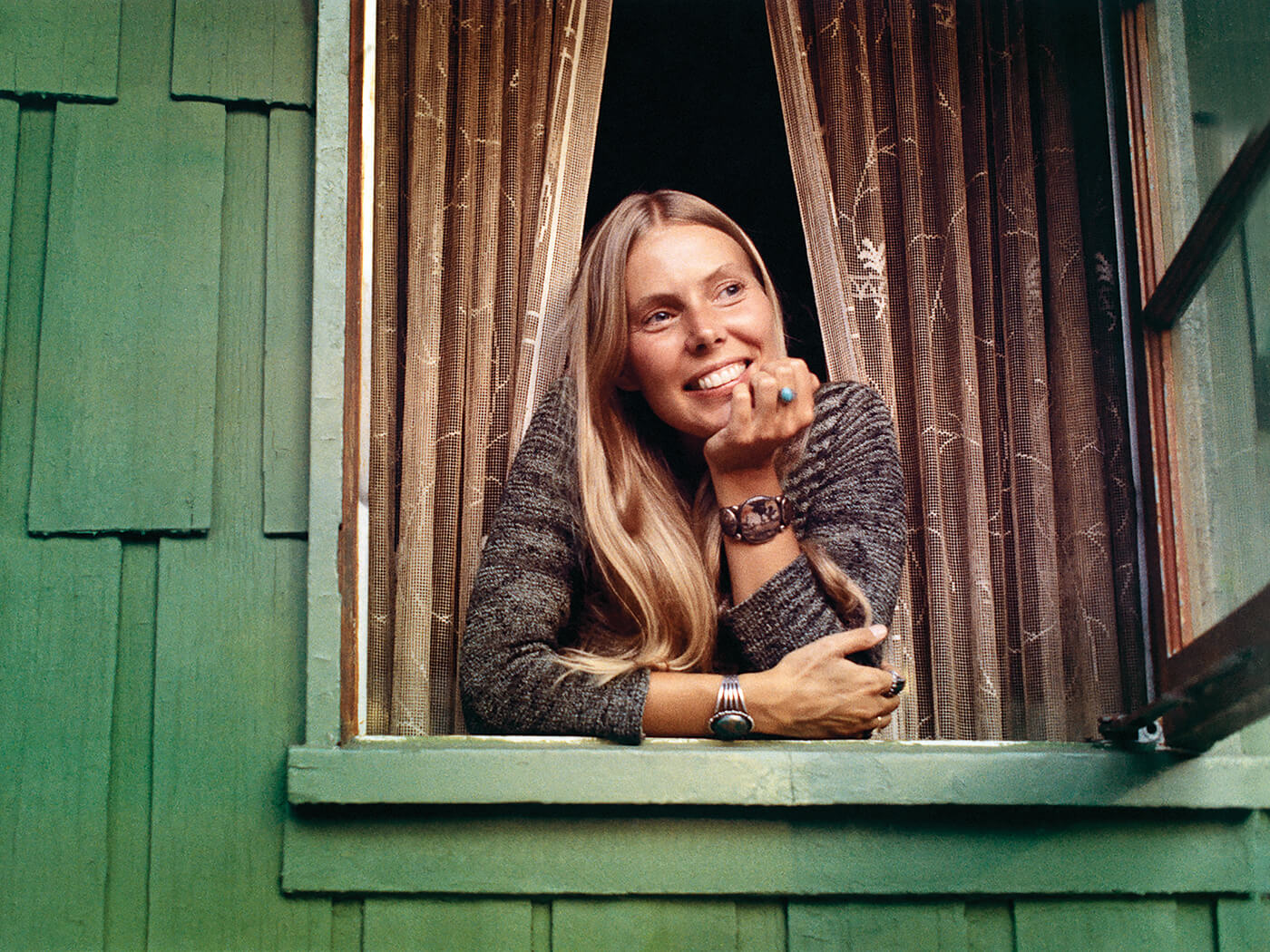In 1979, Joni Mitchell gave an interview to Rolling Stone, in which she talked about her
album Blue, released eight years previously, and still the high-water mark of her career. “There’s hardly a dishonest note in the vocals,” she told the magazine. “At that period in my life, I had no personal defences. I felt like a cellophane wrapper on a pack of cigarettes. I felt like I had absolutely no secrets from the world and I couldn’t pretend in my life to be strong. Or to be happy. But the advantage of it in the music was that there were no defences there either.”
It is Blue that crowns The Reprise Albums – the latest release from The Joni Mitchell Archive Series – and to listen to it here, as the culmination of its three predecessors, Song To A Seagull, Clouds, Ladies Of The Canyon, is to hear afresh not just the majesty of its songs, but the sound of an artist grown unflinching in her songwriting – as if the previous three records, for all their beauty, were really just Mitchell clearing her throat.
We are quite accustomed now to the traits of confessional songwriting – the sparse setting, the unguarded lyric, but it was Blue that defined them, that introduced the idea of lyrical vulnerability as an act of daring. Across its 10 songs Mitchell tackled a number of love affairs – with Graham Nash (My Old Man), James Taylor (This Flight Tonight) and Leonard Cohen (A Case Of You) – the child she gave up for adoption (Little Green), and acknowledged her own selfishness and wilful nature that caused the demise of a relationship (River).
If Dylan’s trademark was his unknowability, Mitchell’s was arguably her decision to let everything be known – Kris Kristofferson once famously told her she ought to “save something for yourself”. But to write so openly was radical for a female artist – through these portraits of her own emotional life, its darknesses and complications, Mitchell achieved a kind of emancipation.
It is wrong to entirely disentangle Blue from its predecessors: to listen to the Reprise albums as a collection is to be reminded of the wild distillation of talent contained in four short years and four remarkable records. Certainly, with knowledge of Blue, there is something still guileless and green about Song To A Seagull – the music holds a folky formality, and Mitchell never seems to truly inhabit the lyrics, beyond, perhaps Cactus Tree, in which a woman catalogues ex-lovers, her heart “full and hollow like a cactus tree”.
Clouds is more limber, holding the supple beauty of Chelsea Morning, and Both Sides, Now – already a hit for Judy Collins, in the voice of its creator the song gains a languid, ruminative power. It’s also on Clouds that Mitchell starts to show one of her most distinctive qualities as a songwriter: a willingness to let both her music and her lyrics lie unresolved.
Ladies Of The Canyon is somewhat coloured by the influence of Crosby, Stills, Nash & Young, but there is a growing sophistication to her lyrics, a new breadth to her subject matter, and its final run of songs – Big Yellow Taxi, Woodstock, The Circle Game
– is irresistible.
When Mitchell set out to write Blue it was not only with a wish to write a break-up album, and to process the difficulties of her 27 years, but with a desire to disrupt the adoration of the music fans who had placed her at the heart of the Laurel Canyon scene. Many years later she would tell of the impulse to lay herself so lyrically bare: “They better find out who they’re worshipping,” she said. “Let’s see if they can take it. Let’s get real.”
That realness lay not only in the frankness of her subject matter, but also in the reaches of her voice. On Blue, Mitchell displays her distinctive octave-twirling agility, but, too, the stiller, siltier depths she would later explore on records such as Hejira and Mingus. It brings a new intensity and resonance to these songs, strung out over just piano, guitar, Appalachian dulcimer, the better to catch the colour and hue of her lyrics.
To mark 50 years since Blue’s release, the albums in the Reprise boxset have been remastered, and in the case of Song To A Seagull, remixed – according to Mitchell, “The original mix was atrocious. It sounded as if it was recorded under a jello bowl, so I fixed it.” There is limited-edition vinyl, artwork that includes a self-portrait sketched by Mitchell during the period, and an essay by Brandi Carlile, who credits Blue with not only making
her a better songwriter, but with making her a better woman. “It taught me what it means to be really tough,” she writes, “and that there was never anything ‘silly’ about the feminine.”
It is the toughness of femininity that runs through this collection: songs that are beautiful and uncompromising and groundbreaking; a dismantling of defences that would lead to the most strikingly honest work of Joni Mitchell’s career.

